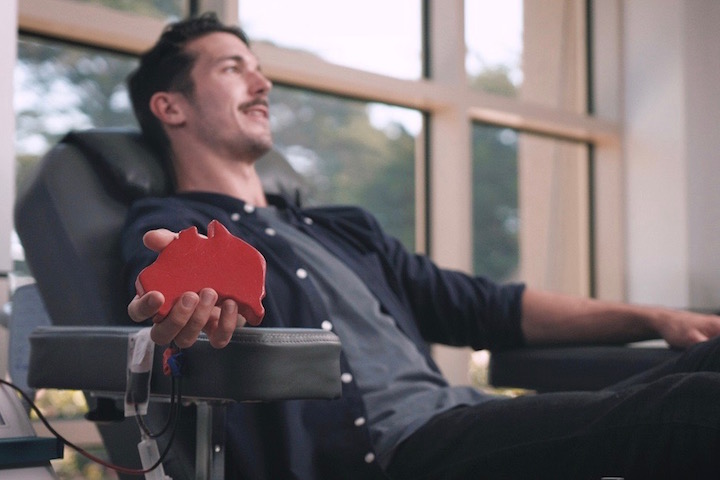
Good Health
Help! I have pain in the testicles
Pain in the testicles can represent an emergency needing medical attention straight away.
The most dangerous cause of pain in the testicles is testicular torsion. This is when the testicle has spun around on its axis, cutting off the blood flow. Without immediate treatment, the testicle can die and will need to be removed.
Other causes of testicular pain include infection by bacteria such as chlamydia and gonorrhoea, trauma, injury and hernias. Testicular cancer can sometimes cause pain though more often it is first noticed due to a lump or change in the shape of the testicle.
Let’s learn a bit about our testicles.
The testicles are a paired set of sex organs that in most cases are found in the scrotum, the sac that hangs below the penis. They have two important roles: production of sperm for reproduction and the production of the sex hormone testosterone.
While in the womb, the testicles form from the same tissue as the kidneys. During development, they track down the back wall of the abdomen to the groin where they pass though the front abdominal wall and into the scrotum.
In about 3 percent of full-term babies and 30 percent of babies born pre-term, one or both testicles may not fully descend into the scrotum. This is called cryptorchidism. In most cases, the undescended testicle will drop into the scrotum by the age of one.
Cryptorchidism can lead to decreased fertility and an increased risk of testicular cancer. If the testicle has not fully descended by the age of one, it may need to be surgically corrected.
The testicle is an oval-shaped organ ranging in size from a small egg to the size of an olive. Across the back of the testicle is a tubular structure called the epididymis that carries sperm from the testicle to the penis during ejaculation. The epididymis joins to the vas deferens that is wrapped inside the spermatic cord as it travels upwards in the scrotum through the abdominal wall and inside the abdomen.
The spermatic cord also includes the arteries and veins that carry blood to the testicle, nerves and a passageway for lymphatic drainage.
When examining your testicles, you can feel that the testicle is firm with a smooth outer coating. You should be able to feel the tube-like structures on the back of the testicle as well as the spermatic cord as it travels up towards the top of the scrotum.
Understanding the feel of your testicles is important as it will enable you to notice any changes that may be associated with testicular cancer.
What is testicular torsion?
Testicular torsion is when the testicle spins inside the scrotum, leading to twisting of the spermatic cord, cutting off the blood supply to the testicle.
Testicular torsion is a medical emergency. If not treated in as few as four hours, the testicle can be starved of oxygen and die.
Testicular torsion normally presents as extreme pain in one side of the scrotum. Because of the twisting, the testicle may also rise towards the top of the scrotum. Because of the intensity of the pain, there can also be nausea, vomiting and abdominal pain.
Because of the extreme risk of loss of a testicle, it’s important to present to the hospital emergency department if you have any sudden or severe pain in the testicle. Every minute makes a difference.
With rapid diagnosis, treatment can be done in surgical theatre to restore blood flow and to anchor the testicle to the scrotum to prevent twisting in the future.
Some men have a small growth at the top of the testicle called the appendix testis. Due to its long shape, it can also twist, causing a similar pain. This can also be treated surgically, although sometimes it may be able to to be treated in other ways.
Other causes of testicular pain can include:
Trauma to the testicles
Any form of trauma such as a punch, kick or fall on to the groin can lead to damage to the testicle. If you have ever had a blow to the groin, you would be well aware of the extreme pain that can be caused. Because of the risk of rupture, tearing or damage to the testicle, it’s best to see your doctor if the pain does not settle rapidly after the incident.
Infections of the testicles or epididymis
By far the most common causes of testicular infections are the sexual infections chlamydia and gonorrhoea. Infections of the testicles can range from a dull ache in the testicles and discomfort passing urine to extreme infections requiring hospital admission.
The most common symptoms of testicular infections include swelling, pain and fevers. Discussion and examination with your doctor can enable treatment to be initiated. Because the testicle and epididymus can be a difficult area to get antibiotics to, you may need to take an antibiotic for several weeks to ensure all traces of the bug are gone.
Although very rare, mumps can lead to extreme swelling and pain in the testicles. Occasionally mumps can also lead to decreased fertility and low testosterone production.
Testicular cancer
While most testicular cancers are pain-free, 30-40 percent of people with testicular cancer will have a dull ache or a feeling of heaviness in the testicle or scrotum. Ten percent of men with testicular cancer will present with sharp or severe pain.
Testicular cancer is the most common form of cancer affecting men aged 15 to 35. Approximately 675 men are diagnosed with testicular cancer in Australia every year.
Early detection and treatment mean that more than 95 percent of men who have had testicular cancer survive, living normal lives. Many father children.
The most common presentation for testicular cancer is the man or his partner noticing a lump or change in the size of the testicle.
Because early detection is the key to survival, it’s important you see your doctor as soon as you can if you notice a lump on your testicles.
How to examine your testicles
A testicular exam is a very simple process. Best done every month, it’s suggested all guys check their testicles after a shower. Some suggest doing it on the same day each month with the first of the month being a simple way to remember.
By DR GEORGE FORGAN- SMITH









